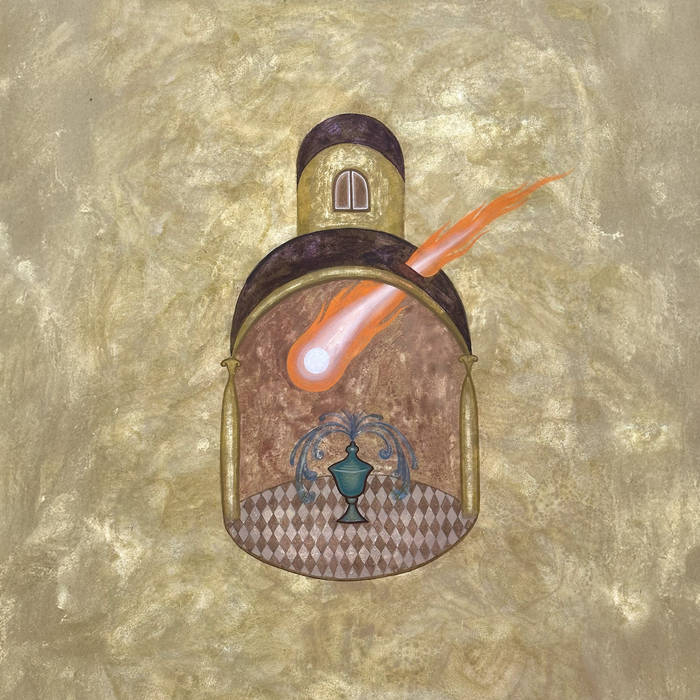Already on the fractious Madrigals, Heinali (Oleh Shkudeiko) impressed with his ability to combine Renaissance polyphony with modern electronics. He created music that does not recreate the past but uses it as a foundation for contemporary sound constructions. That wasn’t only a formal experiment; today, it is also a gesture of memory, resistance, and spiritual mobilization. On Гільдеґарда (Hildegarda), a new album recorded with vocalist Andriana-Yaroslava Saienko, this tension becomes the axis of their latest work.
Heinali has been exploring early music for the past decade, but not as an archaeologist – rather as a contemporary composer who explores how ancient forms and instrumentation can resonate today. Madrigals was fascinating: colorful, precise, and yet disturbingly topical. Since Russia invaded Ukraine, Heinali’s work has taken on a new context – such as on the album Kyiv Eternal, a sonic document of the city before the attack. Andriana-Yaroslava Saienko, on the other hand, followed a classical academic path before turning to traditional singing. She was inspired by the acting and physicality of folk songs, which – although once forbidden – have survived in obscurity since Soviet rule.
Гільдеґарда reinterprets the compositions of the 12th-century prioress, philosopher, and visionary Hildegard of Bingen. Synthesized suites and Saienko’s traditional Ukrainian singing intertwine in intense polyphonic music, full of spiritual tension. The album contains two extended pieces: ‘O Ignis Spiritus Paracliti’ and ‘O Tu Suavissima Virga’. The first is an energetic, impetuous, fiery prayer for life. The composition unfolds slowly, from gentle drones to a monumental wave of sound that overwhelms the finale. The second track – cooler, more contemplative, humming à la murmurando – pays tribute to St. Mary. Bass drones provide the foundation for Saienko’s vocals, which move with solemnity and focus.
Both tracks were recorded at a much slower tempo than the original (each lasts almost twenty minutes). They can be played in any order, and their structures mirror each other – one responds to the other, the voice reacts to the electronics, and the synthesizer blends in with the singing. The tension between technology and physicality here becomes the core of the entire narrative. Saienko does not perform Hildegard’s works in a historically faithful way. She interprets them with emotional freedom, preserving the original sense and using Ukrainian translations of the Latin texts.
They recorded the album in the Cistercian abbey of Sylvanès in southern France. The church’s acoustics, built of porous stone, offer a reverberation of up to eight or nine seconds. The sound does not blur, as in a Gothic cathedral. It is clear, almost crystalline. That influences the music. Heinali draws on techniques from medieval music, such as using long drone sounds – once performed on lyres, bagpipes, or organs – with modular synthesizers. These sounds provide the foundation and space for the vocals. In the context of Гільдеґарды, they also become a vehicle for memory: of tradition, of the past, of Ukraine.
The digital version of the album includes an additional track worth listening to, ‘Zelenaia Dubrovonka’. Based on a Ukrainian folk song from Polesia, the duo rearranged it to reflect contemporary reality. A woman asks the forest: “Why is it humming?” In the traditional version, the answer was a Tatar passing through the forest. Saienko changed the word to ‘moskovid’. Folk songs have always been adapted to reflect current history. Now, it sounds like a lament, a testimony, an objection to Russia’s actions on Ukrainian territory.
Гільдеґарда is not soothing, and its purpose is not contemplation. It is a call to wakefulness. It reminds us that music is not locked away in a museum but is accessible – just as traditional Ukrainian songs were suppressed and banned by the USSR for decades. Spiritual experience and tension expand this reception at the junction of programmed electronics and spontaneous singing. A voice that remembers.


